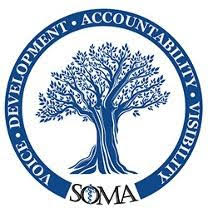› Forums › Spring 2020 Resolution Forum › Resolution: S-20-19: RECOGNIZING THE NEED TO IMPROVE OSTEOPATHIC MEDICAL STUDENTS’ EXPOSURE AND ACCESS TO ABORTION EDUCATION
- This topic is empty.
-
AuthorPosts
-
-
April 7, 2020 at 12:37 pm #3093
Valerie Lile
Keymaster1 WHEREAS, in 2011, nearly half (45%) of all pregnancies in the United States were unintended,1
2 WHEREAS, approximately 862,320 abortions were performed in 2017 in the US with medication
3 abortions accounting for 39%,2,34 WHEREAS, an estimated one in three women in the US will seek induced abortion services by age
5 453,4 and 18% of pregnancies in 2017 ended in abortion,2,3 making it a common medical procedure,6 WHEREAS, standard-of-care, legal abortion is also one of the safest procedures in medicine3, such that
7 childbirth has maternal mortality rate that is 14 times that of legal abortion defined as that performed
8 by a skilled provider in a hygienic setting with the appropriate equipment,49 WHEREAS, women and adolescent girls who attempt self-induced or seek unskilled abortion are at
10 increased risk of severe injury and death, self-induced abortion accounts for 1 in 8 of approximately
11 600,000 maternal deaths worldwide, and approximately 70,000 women worldwide die each year as a
12 result of complications from illegal or unsafe abortions,5,6,713 WHEREAS, induced abortion and relevant counseling is widely accepted as within a family physician’s
14 scope and training, in such improves patient safety by promoting continuity of care,8,915 WHEREAS, exposure to thorough abortion training improves a practitioner’s ability to provide
16 comprehensive, judgement-free patient education on options for pregnant women,8,917 WHEREAS, in a survey of 122 medical schools in the US and Canada, one-third of medical school
18 students reported they had received no preclinical abortion training whatsoever,1019 WHEREAS, while roughly half of medical schools in the US and Canada offer clinical third and fourth
20 year electives in which abortion training is offered, few are able to participate and therefore few
21 students ever get exposed to medical abortions in their clinical rotations,10 now, therefore, be it22 RESOLVED, that the Student Osteopathic Medical Association (SOMA) encourages the Commission
23 on Osteopathic College Accreditation (COCA) to incorporate adequate levels of medical and surgical
24 abortion-focused education within COM curricula of didactic years. This will include discussion of pre-
25 and post- procedural and counseling patients to address the lack of education and exposure to this
26 topic that affects hundreds of thousands of women worldwide5,6,7. This will not affect physicians right to
27 refer but will address education on how to properly educate patients on this topic.References
- Finer, L. B., & Zolna, M. R. (2016). Declines in Unintended Pregnancy in the United States, 2008–2011. Obstetrical & Gynecological Survey, 71(7), 408–409. doi: 10.1097/ogx.0000000000000340
- Jones, R. K., Witwer, E., & Jerman, J. (2019). Abortion Incidence and Service Availability in the United States, 2017. doi: 10.1363/2019.30760
- Grimes, D. A., Benson, J., Singh, S., Romero, M., Ganatra, B., Okonofua, F. E., & Shah, I. H. (2006). Unsafe abortion: the preventable pandemic. The Lancet, 368(9550), 1908–1919. doi: 10.1016/s0140-6736(06)69481-6
- Walsh, M. D. (2012). The Comparative Safety of Legal Induced Abortion and Childbirth in the United States. Obstetrics & Gynecology, 119(6), 1271. doi: 10.1097/aog.0b013e318258c806
- Smith, J. P. (1998). Risky choices: The dangers of teens using self-induced abortion attempts. Journal of Pediatric Health Care, 12(3), 147–151. doi: 10.1016/s0891-5245(98)90245-0
- Murray, S., & Wooltorton, E. (2005). Fatal sepsis after medical abortion with Mifeprex misoprostol. Reactions Weekly, (1062), 2. doi: 10.2165/00128415-200510620-00002
- Sajadi-Ernazarova, K. R., & Martinez, C. L. (2019). Abortion Complications. StatPearls. Retrieved from https://www.ncbi.nlm.nih.gov/books/NBK430793/
- Women’s Health Care Physicians. (2014). Retrieved from https://www.acog.org/Clinical-Guidance-and-Publications/Committee-Opinions/Committee-on-Health-Care-for-Underserved-Women/Abortion-Training-and-Education?IsMobileSet=false.
- Kumar, V., Herbitter, C., Karasz, A., & Gold, M. (2010). Being in the Room: Reflections on Pregnancy Options Counseling During Abortion Training. Society of Teachers of Family Medicine, 42(1), 41–46. Retrieved from https://www.stfm.org/FamilyMedicine/Vol42Issue1/Kumar41
- Espey, E., Ogburn, T., Chavez, A., Qualls, C., & Leyba, M. (2005). Abortion education in medical schools: A national survey. American Journal of Obstetrics and Gynecology, 192(2), 640–643. doi: 10.1016/j.ajog.2004.09.013
Submitted by:
Tsaina Mahlen, OMS II – Pacific Northwest University of Health Sciences COM
Victoria Sefcsik, OMS I – Pacific Northwest University of Health Sciences COMAction Taken:
Date:
Effective Time Period: Ongoing
-
-
AuthorPosts
- The forum ‘Spring 2020 Resolution Forum’ is closed to new topics and replies.
